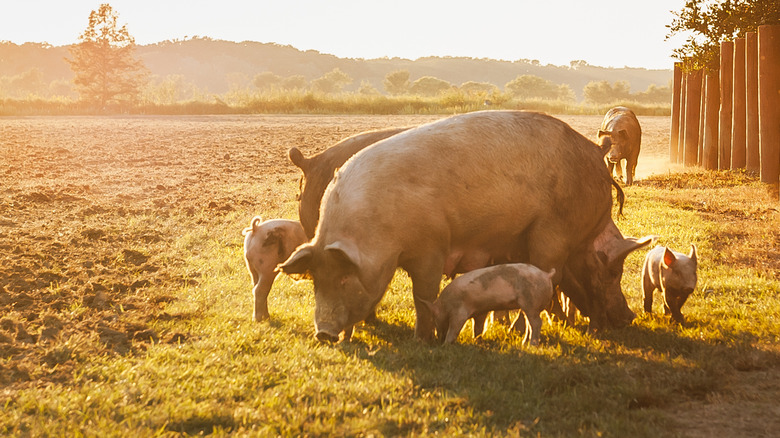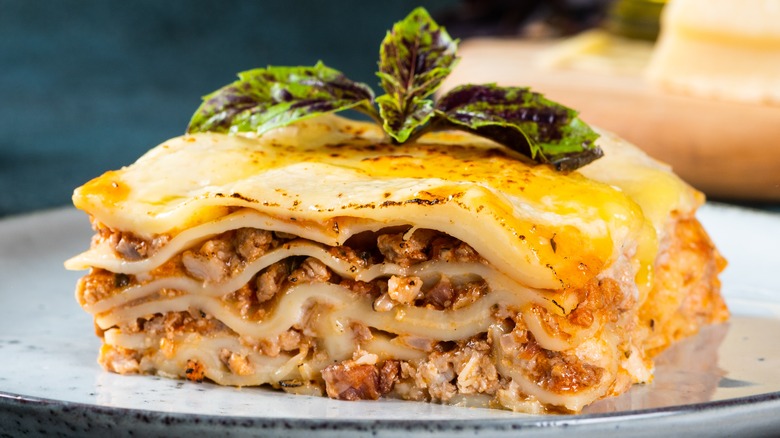Ancient Lasagna Was A Whole Different Animal
Though he was an incessantly irascible cat, the fictional Garfield got a few things absolutely right. Mondays are the worst, and lasagna is delicious. Per HuffPost, Garfield's love of lasagna was inspired by the real-life affinity the creator Jim Davis had for the dish. But it's easy to see why folks both feline and otherwise would enjoy a steaming slice of lasagna.
A classic lasagna recipe calls for layers of meat, cheese, and tomato sauce, all baked into a delicious tower before being devoured by either a small family or a single hungry cat.
However, it's possible that earlier versions of the modern lasagna wouldn't do so well in the face of Garfield's fickle feline palate. In fact, some of the first-ever recipes for lasagna are nearly unrecognizable. Rather than melty cheese and tomato sauce, ancient lasagna had ingredient lists that included minced figpecker and stacked sow's belly (per Food52).
In ancient Rome, lasagna looked a lot different
According to La Cucina Italiana, one of the earliest lasagna recipes dates back to ancient Rome and is credited to Marcus Gavius Apicius. Apicius was something of a food fanatic, who gained notoriety in ancient Rome for his exorbitant and luxurious eating habits, per the Chicago Tribune. Apicius is thought to have written the only remaining repository of Greco-Roman recipes, "De Re Coquinaria," or "On Cooking."
The University of Chicago's LacusCurtius published a translated version of this ancient cookbook. Book Four of "De Re Coquinaria," which focuses on quiches and timbales, contains a recipe for Apician dish, the predecessor to lasagna.
Apician dish was a veritable turducken of mashed-together meats, constructed from layers of sow's belly, fish, and poultry alternating with pancakes, doused in a sauce of broth and raisin wine before being steamed until it congealed. Ancient lasagna wasn't just a whole different animal — it was several animals.
Lasagna has a long history
Much like the numerous layers your lasagna should have, the history of lasagna is a multilayered one. Though the Apician dish may be the earliest recorded recipe for lasagna, it wasn't until the 14th century that a more familiar dough- and cheese-based recipe first appeared in a book called "Liber de Coquina," per La Cucina Italiana.
According to National Geographic, Emilia-Romagna, a region in the city of Bologna, is thought to be modern lasagna's native land. However, it's far from the indulgent, cheesy construction that many of us associate with lasagna. Classic Bolognese lasagna calls for a ragù of several different meats and vegetables, combined with a small amount of tomato purée and soaked in Béchamel sauce.
La Cucina Italiana also mentions Vincigrassi, a variety of lasagna that "was created in honor of an army general who fought against Napoleon during a siege of Ancona in the late 1700s." Vincigrassi also has a Béchamel base and is filled with wild mushrooms and prosciutto.


